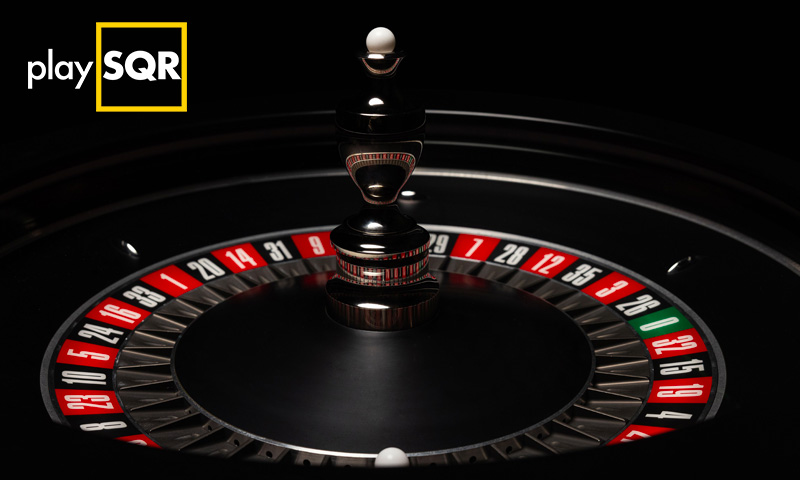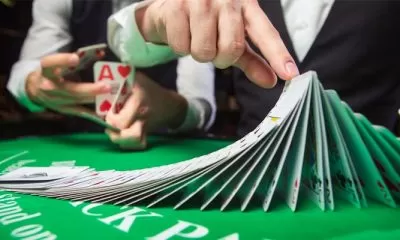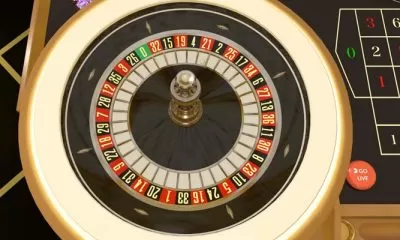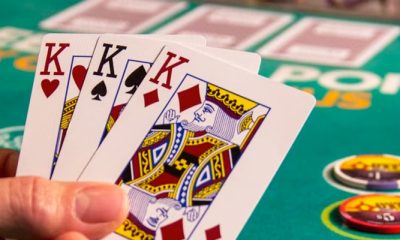Casino
How to Play Roulette: A Guide to the Game, Rules, and Table Placement [Chip]
Published
5 months agoon
By
Sam Jonson
Roulette games enjoy global popularity because of their brief and easily understandable rules. Nevertheless, the game offers a remarkable degree of complexity for bettors, and employing the correct strategy can lead to substantial rewards.
Here is a brief introduction to the rules and strategies of how you can play roulette. We will walk you through all the fundamental aspects, including precise chip placement on the roulette table and effective management of your winnings.
Roulette game
The game’s objective is to accurately predict the number or category of numbers on which the ball will land when the dealer sends it spinning on the wheel.
The gameplay, or a typical roulette round, commences once the dealer has cleared the previous game’s table. Participants should place their bets on preferred number pockets on the table at this point.
Steer clear of overly intricate or extravagant strategies when playing roulette since the game primarily relies on luck. Focus on enjoying the experience and being mindful of when it’s appropriate to conclude the session for optimal gains and lower the risks of losing.
- Numbers 1 to 18.
- Numbers 19 to 36.
- All even numbers.
- All odd numbers.
- All black-colored numbers.
- All red-colored numbers.
- 1st 12: Numbers 1 to 12.
- 2nd 12: Numbers 13 to 24.
- 3rd 12: Numbers 25 to 36.
Roulette casino basics
Every roulette casino game consists of a roulette wheel and a table. Both are marked with 36 numbers and a single 0. In some American roulette variations, an additional 00 is present on both the wheel and the table.
A dealer spins the wheel and tosses a small white ball onto it, which eventually lands in one of the marked pockets. To participate, place a bet on the table, corresponding to the specific slot on the wheel where you believe the ball will come to rest. You will receive a payout if the ball lands on the desired bet.
Besides individual numbers, roulette tables offer several other betting options, including betting on –
The many betting choices provide players various ways to participate in the game and potentially win.
Roulette inside bets
To win a roulette round, you should make accurate bets on the specific number or pocket category where the ball ultimately halts. Opting for an “inside” bet, which involves wagering on individual or specific numbers rather than a bigger number group, typically offers lower odds of winning but higher potential payouts. Some inside bet types include:
- Straight up: Betting on a single number, with a payout of 35 to 1.
- Split: Betting on two adjacent numbers, with a payout of 17 to 1.
- Street: Betting on three numbers in a row, with a payout of 11 to 1.
- Corner: Betting on four numbers that form a square, with a payout of 8 to 1.
- 6-line: Betting on six numbers across two adjacent rows, with a payout of 5 to 1.
Additional betting options in American Roulette
- 5 numbers: Betting on 0, 00, 1, 2, and 3 with a payout of 6 to 1.
- The Row 00 bet: Bet covering 0 and 00 with a payout of 17 to 1.

How to place inside bets?
For a three-number bet using one chip, position it at the desired street’s (a row of three numbers) end on the table layout. For a six-line bet covering six numbers using one chip, place it where two adjacent streets’ edges meet.
Roulette outside bets
Outside bets involve betting on number groups rather than specific individual numbers. These bets encompass categories like even/odd, high/low, and red/black. Here are some outside bet types –
- Red or Black: Betting on either red or black, with a payout of 1 to 1.
- Even or Odd: Betting on all even or odd numbers, with a payout of 1 to 1.
- Column: Betting on a column of 12 numbers, with a payout of 2 to 1.
- Dozen: Betting on a group of 12 numbers (1st 12, 2nd 12, 3rd 12), with a payout of 2 to 1.
- High or Low: Betting on numbers 1-18 or 19-36, with a payout of 1 to 1.
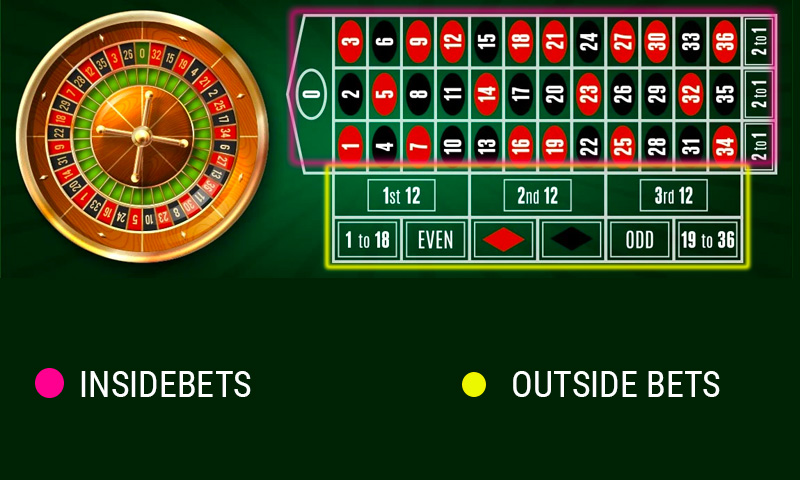
How to place outside bets?
To place this type of bet, simply position the chip on the outer section of the table beyond the number map. These bets provide a simpler and more inclusive approach to roulette, offering players a higher chance of winning even though the payout ratios are relatively lower.
House Edge in Roulette
The house edge in roulette is the percentage of each bet that the casino is expected to win. All bets have a certain probability of winning and a certain probability of losing, and when you combine all these probabilities together, the house edge is the result.
The house edge is managed by the presence of the number 0, which in case of the American roulette adds another 00. By adding extra 0 probability, the house increases its chances of winning against the players. Players should be aware that French Roulette has 1.35% house edge, while European Roulette jumps to 2.70%, and American Roulette comes up to 5.26%.
Specific roulette variants can alter the house advantage. French roulette tables, in particular, implement rules generally more favorable to players. These rules are known as “La Partage” and “En Prison” and specifically apply to outside “even money” bets, including options like odd/even, black/red, and low/high, and a ball landing in the 0 slot.
Under the La Partage rule, players lose half of their bet when they encounter a loss and are not allowed to keep their bet on the table for another spin. On the flip side, the En Prison rule allows players to leave half their bet on the table for the next spin if they lose. This gives them a second chance to recover their initial wager.
In American roulette, the presence of an extra “00” slot further increases the house advantage. With a single 0 on the wheel, the casino holds a 2.7% advantage. However, when the wheel includes both 0 and 00, the advantage rises to 5.26%. Make sure you are aware of rule variations and learn how the game’s odds vary as per a roulette table.
Roulette betting limits
Every roulette table displays the minimum and maximum bets limits. This arrangement ensures that players are aware of the betting range for that particular table. Typical betting limits at a roulette table are – $1 to $5 minimum for inside bets, $5 minimum for outside bets. $1,000 to $10,000 maximum for outside bets, $100 to $1,000 maximum for inside bets.
To manage the potential payouts, the table maximum limits for inside bets are often set lower than those for outside bets. This is because inside bets involve specific numbers or smaller groups of numbers while offering higher payout odds in roulette.
Roulette betting strategies
Although strategies may not guarantee consistent wins, observing patterns can provide insights. A few aspects you can consider –
1. Dealer behavior
Observe the dealer’s spinning technique; some may have unintentional patterns or tendencies that affect the ball’s landing positions. While this doesn’t guarantee an advantage, it may offer clues.
2. Table conditions
Keep watch on any imperfections on the table surface or the wheel itself. Worn-out areas, loose frets, or biased pockets could influence the game’s outcome.
3. Number patterns
Pay attention to the numbers that come up frequently or rarely during gameplay. While roulette outcomes are statistically random, short-term patterns may emerge due to various factors, like a biased wheel or specific ball drop patterns.
Note that observations and patterns, however, are not foolproof methods for winning consistently. Roulette is a game of chance, and each spin is independent of the previous one. So, view such observations as part of the overall casino roulette experience rather than a guaranteed path to success.
How to play roulette
Typically, roulette casino games follow the below steps –
1. Place bets
Place your bets on the roulette table, considering betting limits before the dealer spins the wheel. You can bet on specific numbers, groups of numbers, or outside bets like red/black or odd/even.
2. The dealer spins the wheel
The dealer spins the roulette wheel in one direction and releases a small white ball in the opposite direction.
3. Ball lands in a numbered slot
The ball eventually rests in one of the numbered pockets on the wheel.
4. Determine winning bets
If the ball lands on a number or group you’ve bet on, you win! Payouts are based on the type of bet and associated odds.
5. Collect winnings
If you win, the dealer will distribute your winnings. If you lose, your bets are collected by the house.
6. Place new bets
After each round, you can place new bets for the next spin.
Playing roulette offers a thrilling and unpredictable gaming experience, but it is essential to remember that it is primarily based on luck. If you enjoy the excitement of a fast-paced game and understand the inherent risks, roulette can be an entertaining choice.
Just remember to gamble responsibly and set limits for yourself while you play roulette!
You may like
-
High Low Game: How and Why to Play, Variations, and Strategies
-
Live Speed Baccarat: Game Rules, How to Play, and Strategies
-
A Comprehensive Guide to Play Poker Online with Friends
-
How to Play Roulette: Everything You Need to Know about Casino Roulette Game
-
Play Online Roulette Successfully: 6 Proven Strategies to Help You Win
-
Learn How to Play 3 Card Brag




